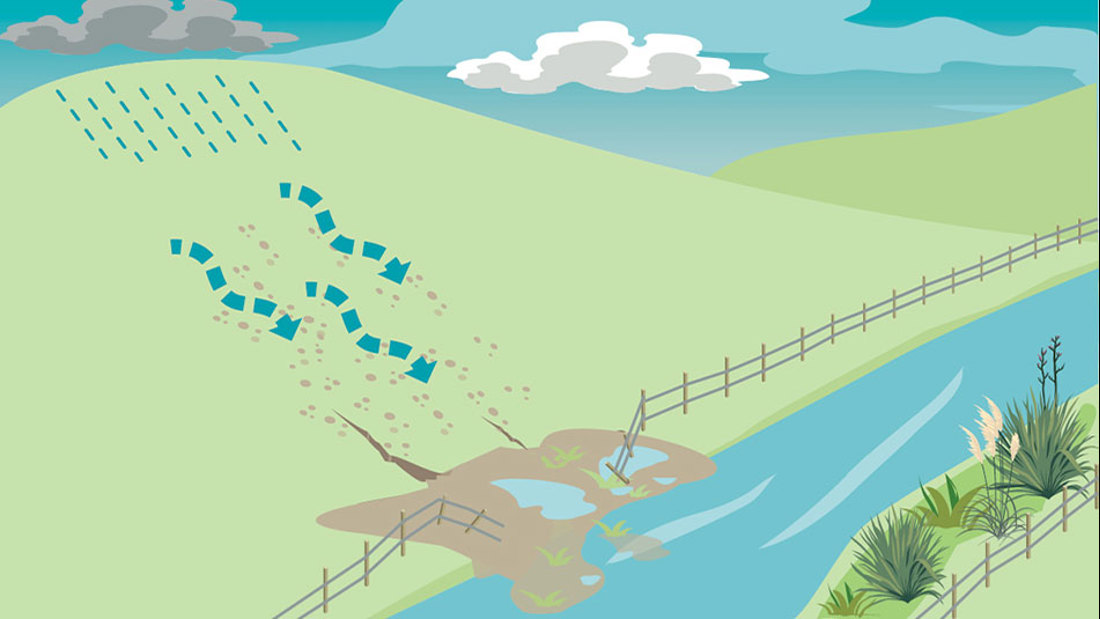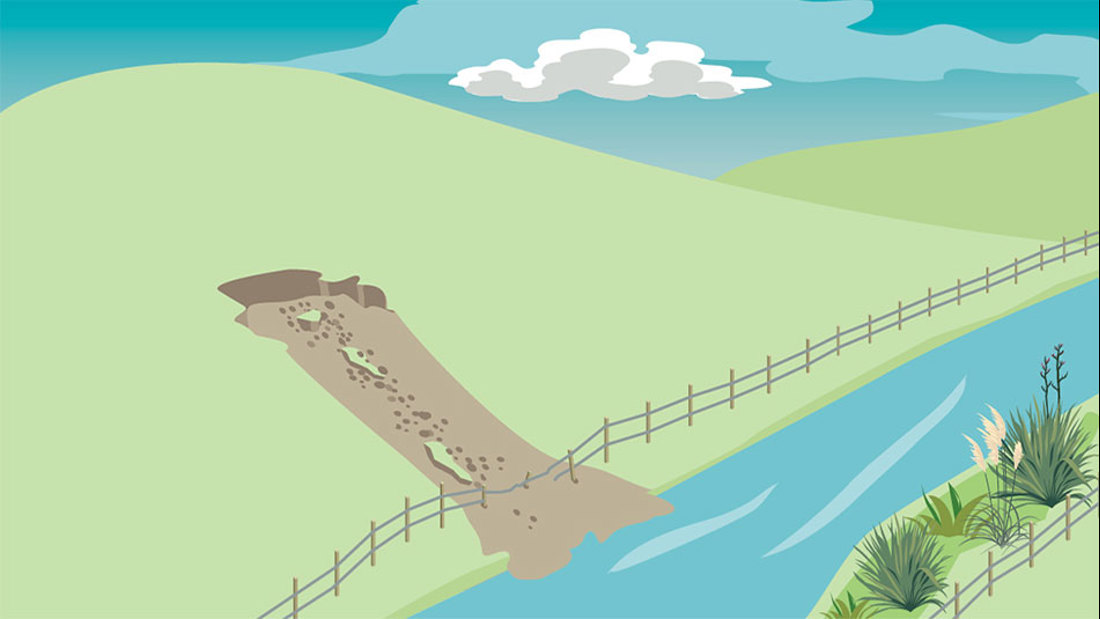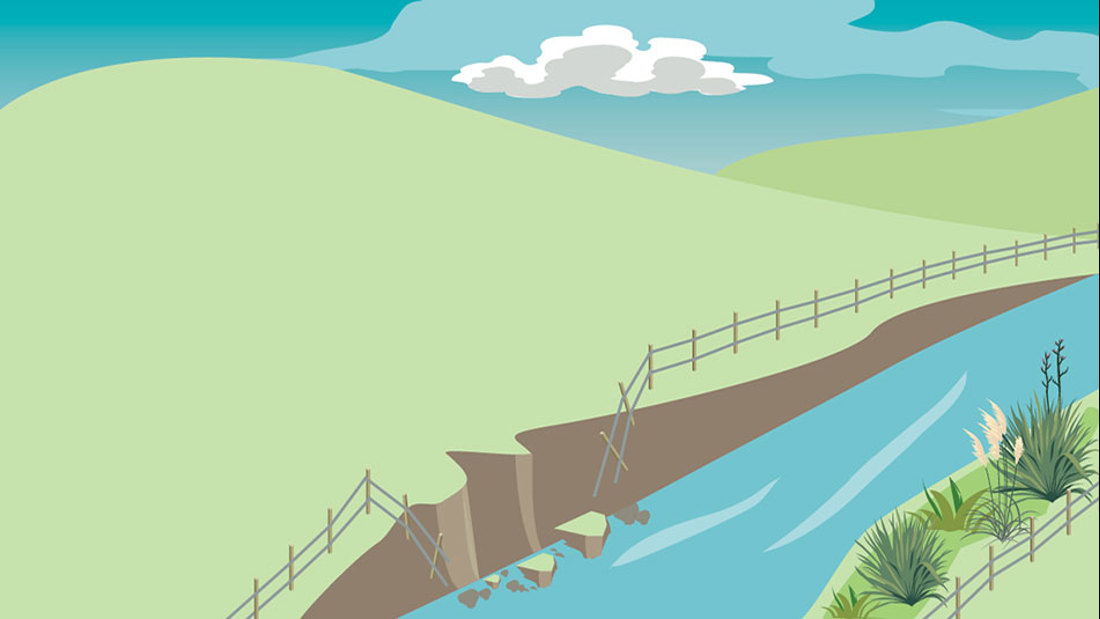Erosion control
3 min read
Erosion control is the practice of preventing sediment and nutrients from entering waterways and preserving topsoil on paddocks. Erosion is a natural process but is accelerated by weather events, removal of vegetation, and external management pressures. Managing erosion will reduce the loss of productive land, reduce flooding effects, and reduce the effect of sediment on water quality.
Stock management
Exclude stock from erosion-prone areas to reduce pressure on banks and allow vegetation to establish. Use lighter stock classes or lower stocking rates to reduce pressure on steep land.
Fencing
Fence off waterways and streams to reduce stock or equipment pressure, and allow vegetation to establish and stabilise the bank. Ensure the fence is put back far enough to allow for water movement when water levels are high and erosion events occur.
Planting erosion-control species
The best long-term solution for erosion control on banks is to plant a combination of natives with poplars and hybrid willows. Natives have a deep root structure for stabilising banks but they take longer to establish. Poplars and willows are faster growing, so they provide erosion control while the native plants are establishing.
Low natives such as sedges and rushes will survive flooding on the lower banks and help reduce soil being washed away.
Trees such as poplars and hybrid willows are good for steeper upper banks and hillsides. They are fast-growing and have a strong, deep root system that will help control erosion. Ongoing maintenance is required with these trees to keep them manageable. In wind-prone areas plant shelter belts at right angles to prevailing winds.
Erosion control structure
If erosion is severe and or threatening core infrastructure, an immediate solution is hard structures such as rock and gabion baskets, flumes and detention dams. These types of structures will likely require consent from your regional council and assistance from an engineer.
Drain banks should be gradually sloped, with a shallow 'V' formation rather than an unstable 'U' shaped bank.
Culverts should be sized to cope with high flows as well as allow for fish passage.
Locate bridges and culverts where there are regular stock crossing points to prevent stock from accessing water.
Nib walls and diversion channels before crossings help to avoid the movement of runoff into waterways.
Grazing and crop management
Soil that is exposed to wind and rain, is at higher risk to erosion. Ensuring that there is good pasture cover in winters, not overgrazing especially on steep slopes, select cropping paddocks carefully, avoid cultivation during dry, windy weather and explore alternative options to full cultivation for crops e.g. no-till.
Movement of soil overland in sheets or channels:

Sheet, rill, and gully erosion: movement of soil overland in sheets or channels.
Earthflow, slips, and slumps:

Mass movement: earthflow, slips, and slumps.
Occurs on streambanks, particularly:

Streambank erosion.
Usuall occurs:

Wind erosion
Now’s the perfect time to check in, plan, and set up for a strong season. We’ve pulled together smart tips and tools to help you stay ahead all winter long.
Whether you prefer to read, listen, or download handy guides, we’ve got you covered with trusted tools to support your journey every step of the way.